The content of the article
The fauna of our planet is vast. Separate attention is deserved by such part of it as butterflies. Lepidoptera grouped on the basis of common features. Such a group, for example, are sailboats, also called holders. A distinctive feature of this family of butterflies is not the size, since it includes both large and medium-sized individuals, but an unusual arcuate shape of the wings. Its representatives are daytime insects. To date, there are about 600 species, one of which is the butterfly alkyne (the Latin name is Byasaalcinous or Atrophaneuraalcinous).
Features of appearance
In most cases, alkyne butterflies are large individuals. The wingspan of an insect can reach 8 -9 centimeters. Belonging to the floor in representatives of the species is expressed in the specifics of color. For example, males have wings of black color, while females have wings of gray color, however, dotted with contrasting dark veins.The triangular wings on the front are wide enough, inferior in size to the rear wings are oval. In addition, the edge of the hind wings uneven, slightly wavy, decorated with black edging with specks of yellow and scarlet flowers. The length of the “tails”, which distinguish the alkyne butterflies, among other lepidopterans, is usually 20 millimeters, which in comparison represents a third of the large wing.
The round head and body of the butterfly are decorated with red spots. The big eyes of the insect are bare. Antennae have thickening towards the end, painted black. They perform the function of the olfactory sense organ, as they help to catch the smells of the flora, as well as the pheromones secreted by the potential partners in the mating season. Their usefulness is not limited to this, since they allow the flying butterfly to be in a state of equilibrium. Instead of the mouth opening in sailing vessels, like many lepidopterans, there is a spiraling coiled proboscis, which is the result of the modification of the animal's jaws. When eating the proboscis unfolding. All long insect legs are developed in order to use them in movement.
Habitats
Coniferous and deciduous forests with high humidity have favorable living conditions for insects. The main condition for choosing the place of settlement of the population is proximity to the territories where the Manchurian Kirkazon grows - the only plant eaten by the caterpillars of the species.
Specific behavior
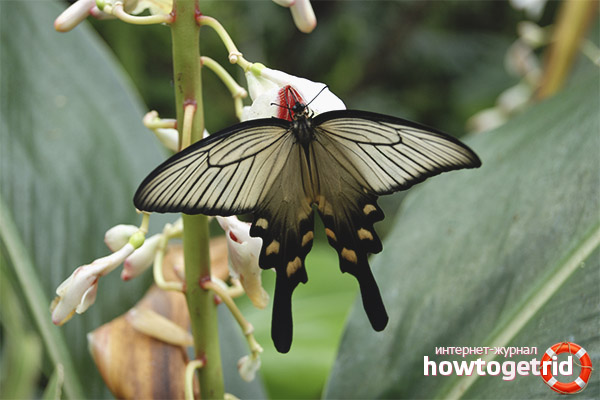
In one calendar year, two new generations of alkyne butterflies appear. The first sees the light at the end of spring. It is based on pupae that survived the winter. They, in turn, produce offspring hatching by mid-July or early August.Butterflies have excellent flying ability, allowing them to travel long distances during migration. In the places of growth of plants that form the basis of the feed of this species of lepidoptera, new temporal groups of insects appear.
In areas of permanent habitat, butterflies prefer to lead a quiet and unhurried life. They often sit motionless, occasionally flying from one plant to another. Females love to hide from natural enemies in the grass, males climb into the crowns of tall trees. Butterflies drink the nectar of flowers that are well known to all bird cherries, honeysuckle. The habit of slow takeoff killed not one individual - this feature makes insects easy prey for collectors.
Procreation
Nature endowed her with a unique "weapon", designed to scare all sorts of enemies. We are talking about iron, located behind the head of the larva.At the moment of extreme danger, it comes out in order to produce a liquid with a strong, somewhat nasty smell. Also in her body contains toxic substances. Scarlet patches on the body of a caterpillar that warn against danger speak of this surrounding animal world. Before turning into a pupa, the larva fixes itself on the branch with the help of a silk thread. The color of the pupated caterpillar is bright yellow.
Video: alkyna butterfly (Byasa alcinous)

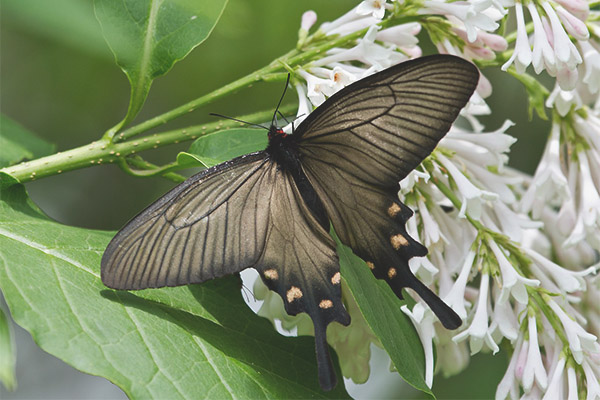

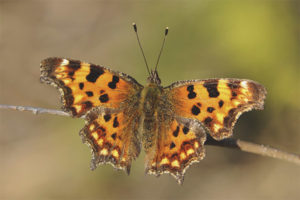
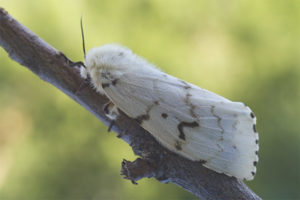
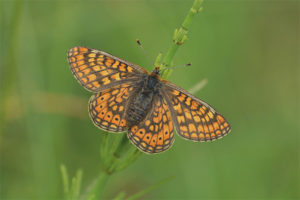

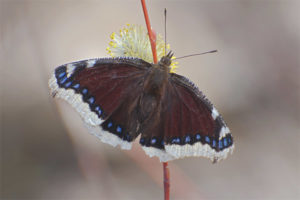
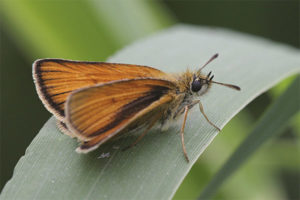


To send